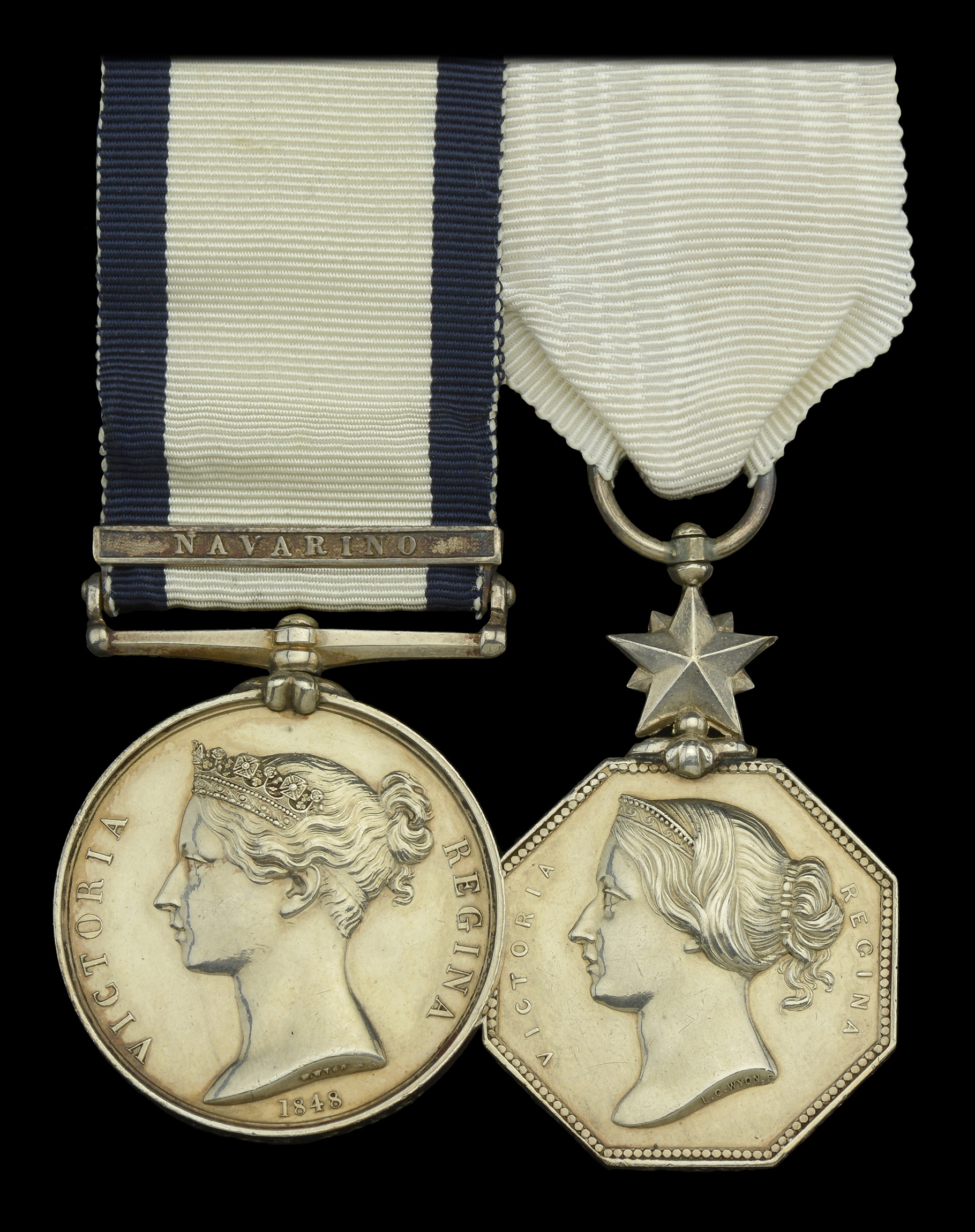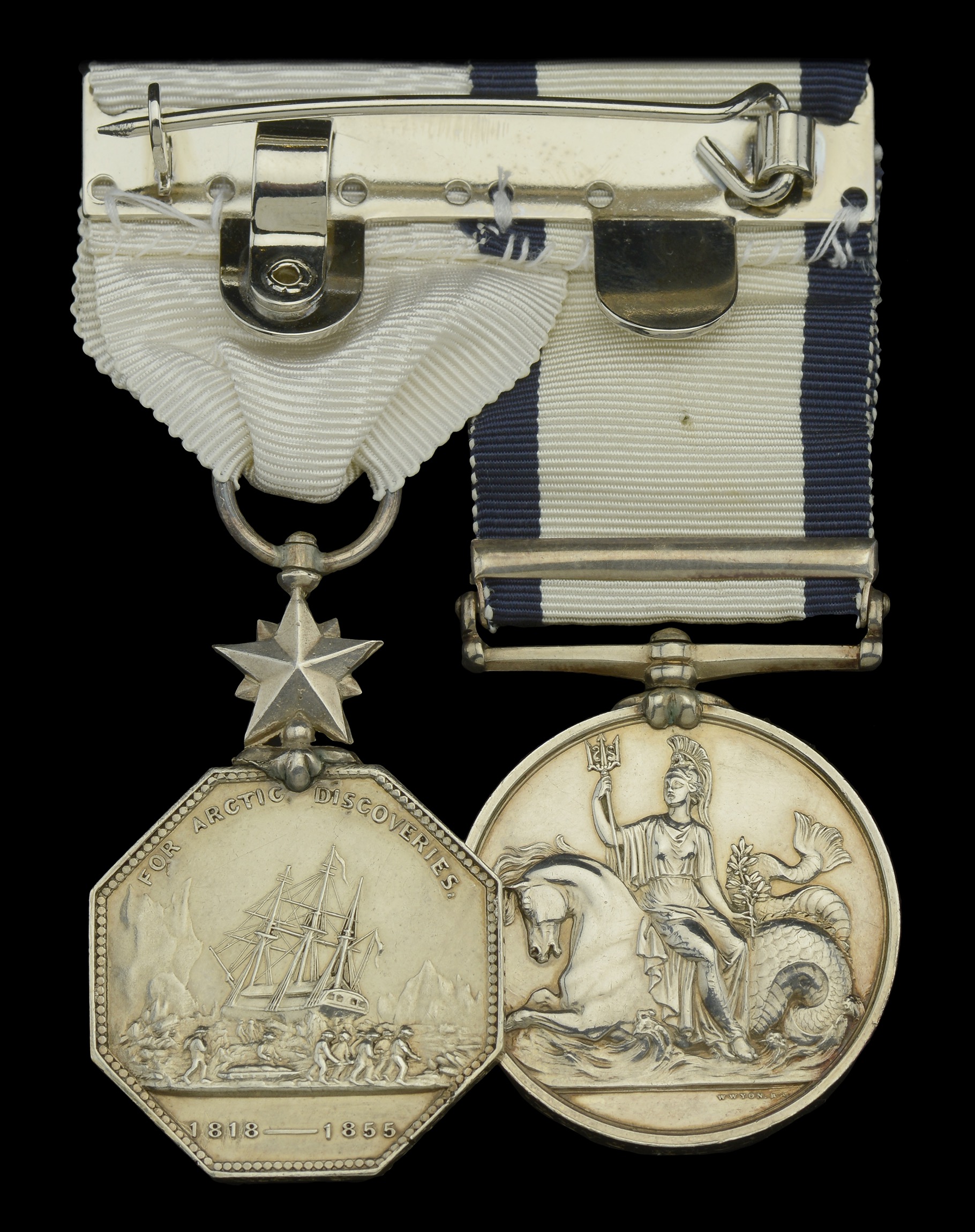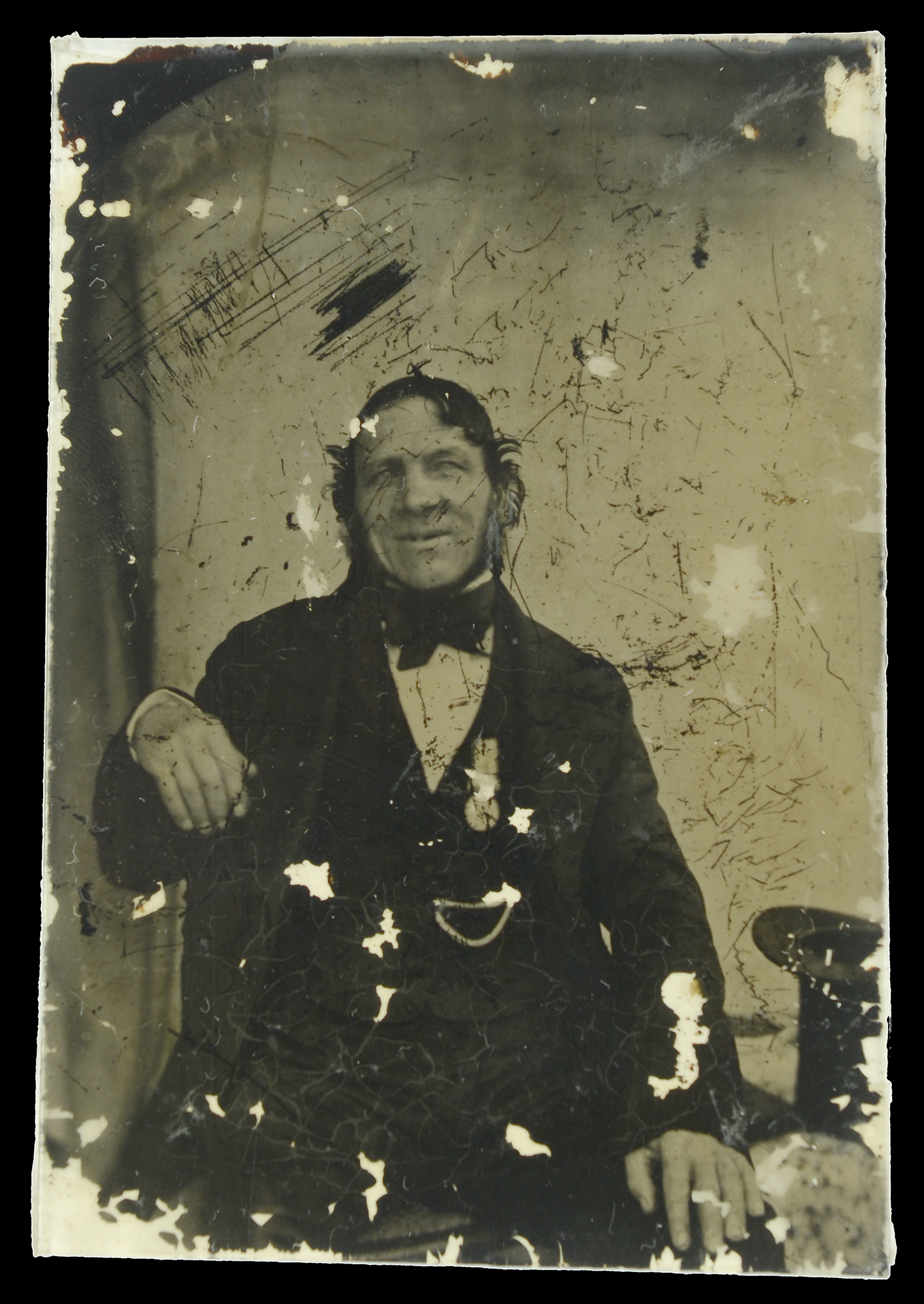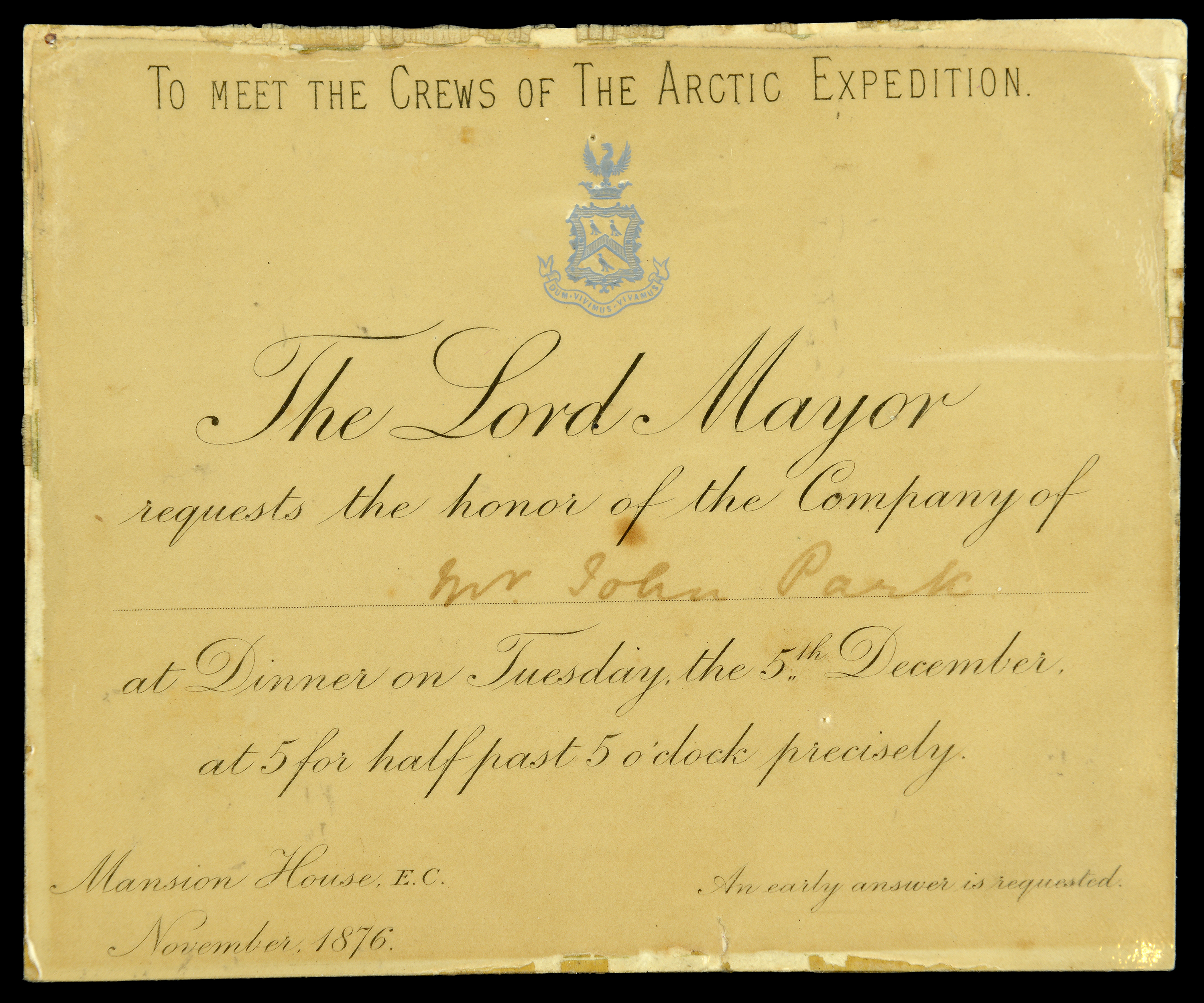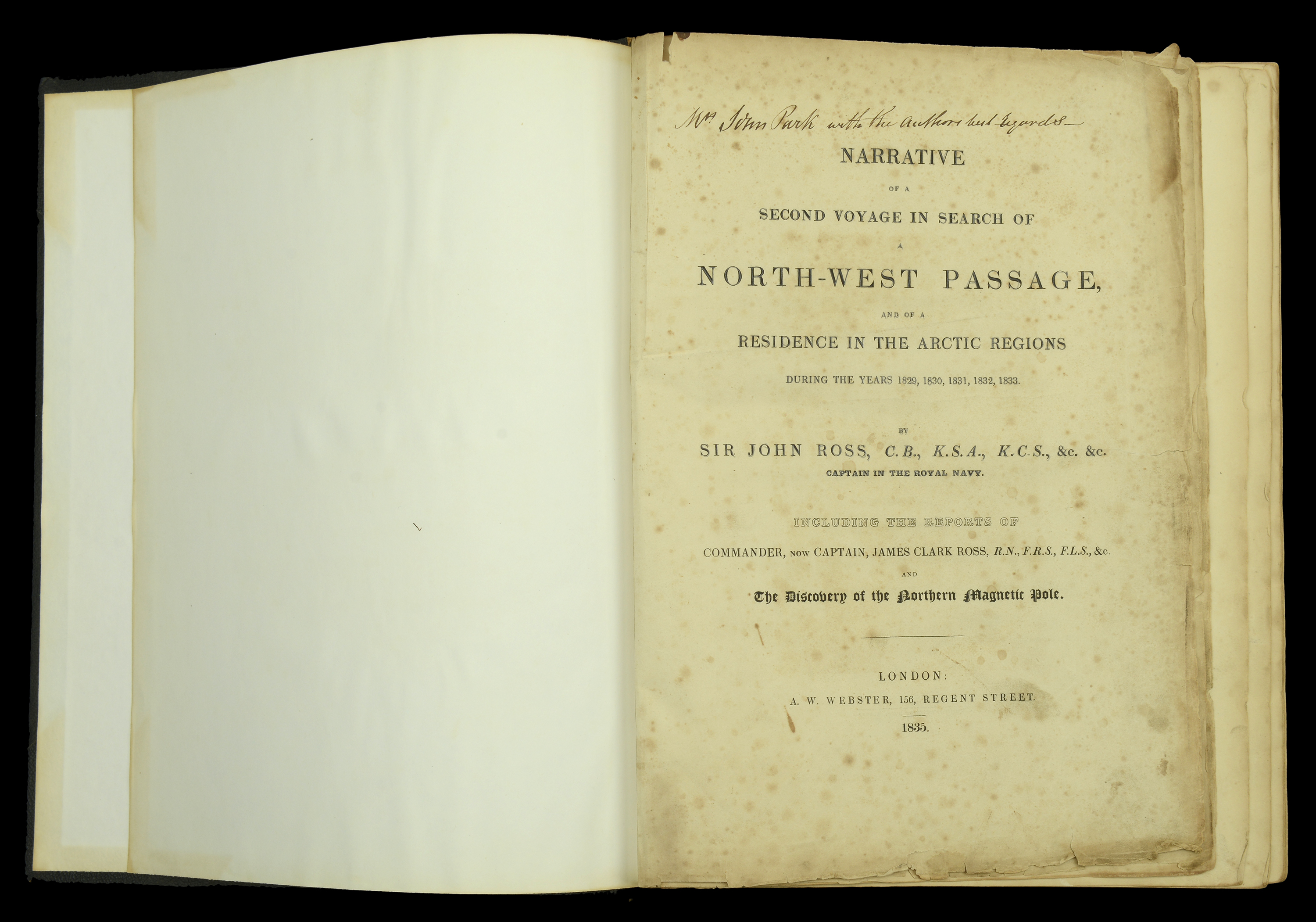The important Navarino and Arctic exploration pair awarded to Seaman John Park, Royal Navy, a member of Captain John Ross’s private expedition in the Victory of 1829-33, during which they discovered the Northern Magnetic Pole but were forced to spend four winters in the Arctic Naval General Service 1793-1840, 1 clasp, Navarino (John Park.); Arctic 1818-55 (John Park from 1829 to 1833) contemporarily engraved on the edges, good very fine (2) £20,000-£24,000 --- Importation Duty This lot is subject to importation duty of 5% on the hammer price unless exported outside the UK --- --- By 1829 the Admiralty had been discouraged from continuing the search to find the North West Passage and it therefore fell to private enterprise to continue the search for the route. Captain John Ross was placed in command of this expedition and the plan was to follow the route of Parry’s voyage in 1824-25, by sailing down Prince Regent Inlet and from there finding a route to the west. In May 1829 he sailed in Victory, a small paddle steamer and the first steam ship to be used for Arctic exploration. She was accompanied by a tender named Krusenstern. The ship’s engine was so large that it took up most of the room on board. It was found, during the voyage, that she was faster using sails than using the engine so eventually its use was discontinued. Ross followed Parry’s route across Lancaster Sound and down Prince Regent Inlet to Fury Beach. There they found the stores and food left by Parry when Fury had been abandoned in 1825. From Fury Beach they continued southward tracing the coast of North Somerset to its southern tip, surveying more than two hundred miles of coastline. Instead of turning into Brentford Bay (now known as Bellot Strait) which would, in fact, have led westward as this was the northernmost point of mainland America, Ross continued southward and thus missed the extension of the North West Passage. Following the coast to the south of Brentford Bay he eventually reached Felix Harbour where Victory wintered and where they contacted the eskimos. From the ship a number of land journeys undertaken by Lieutenant James Clark Ross, John Ross’s nephew, during which he discovered that the position of the North Magnetic Pole could not be far away. Victory was unable to break out of the ice during the summer of 1830 and remained at Felix Harbour for a further winter. James Clark Ross continued his land exploration during the winter of 1830-31 and in May 1831 located the position of the North Magnetic Pole, where he erected a cairn. He also saw during these land journeys what was later named King William Land, which he explored from its northern tip, Cape Felix, to Victory Point on the west coast. Sixteen years later, this was to be the scene of Franklin’s death and the later abandonment of Erebus and Terror. Throughout 1831, hope continued of the ship clearing the ice and, eventually, late in the season, she broke free and sailed northwards, but she was again caught in the ice before reaching Lancaster Sound and had to spend the third winter at Victory Harbour. Here scurvy hit the crew and it was decided to abandon Victory and to pull the small boats over the ice to Fury Beach to reach the provisions left by Parry. At Fury Beach they found three of the boats left by Parry, and John Ross, with a crew of picked men, sailed ahead to reconnoitre the state of Lancaster Sound. He found it jammed with ice and had therefore to return to Fury Beach where they were forced to spend the winter of 1832-33, their fourth in the Arctic. At Fury Beach they built a house in which to live throughout the winter. When spring came they took to the boats and sailed northwards to Lancaster Sound and, off Navy Board Inlet, they sighted what turned out to be the Isabella which had been Ross’s ship on his 1818 expedition. They were taken aboard and returned to England. Following this John Ross was knighted and his nephew promoted to Commander. John Park was born in 1803, at Bridport, in Dorsetshire, was five feet seven inches high, of a sallow complexion, with light blue eyes. His father, who belonged to the Dock-yard at Portsmouth, had him bound seven years apprentice to a hair-dresser, a trade he did not like, and when his time was out he went to sea in 1821, on board His Majesty’s ship Euryalus, in which he served three years, when he paid off, and immediately joined the Glasgow, on board of which he served three years in the Mediterranean. Being asked by me, “What was the most remarkable event in his life?” he answered, that he “had shaved the Duke of Devonshire in a gale on board the Glasgow.” I then asked, “Were you not on board her at the battle of Navarino?” he replied, “Oh, yes, but that was nothing.” His father having lost his life in the American lakes, where he had volunteered to serve, his mother married Mr More, gunner of the Tenedos, who was formerly in the Hecla, and who recommended him to me. He was a very active, willing young man, and useful in his calling as a barber, but too delicate in constitution for this service. Being a good seaman, and having always conducted himself well, I gave him a strong recommendation, and he was, with Curtis, sent by Admiralty order to the Excellent, to prepare for a gunner’s warrant in the royal navy.’ (Biography by Captain John Ross) Little is known of Park’s later life but in the list of Subscribers to Ross’s Narrative he is shown as care of the John O’Gaunt steamer, Liverpool, which infers that he took up a career in the merchant navy, even though he does appear to have received a commission as Gunner R.N. Sold with Sir John Ross’s Narrative of a second voyage in search of a North West Passage, and of a Residence in the Arctic Regions during the years 1829, 1830, 1831, 1832, 1833, two volumes, London 1835, the title page inscribed ‘Mr John Park with the author’s best regards’, with many colour plates, later leather binding; also with photograph on glass of Park in later life wearing N.G.S. Medal, and named invitation to Lord Mayor’s Dinner, December 1876, ‘to meet the Crews of The Arctic Expedition’ [ie Alert and Discovery for 1876 expedition].
















